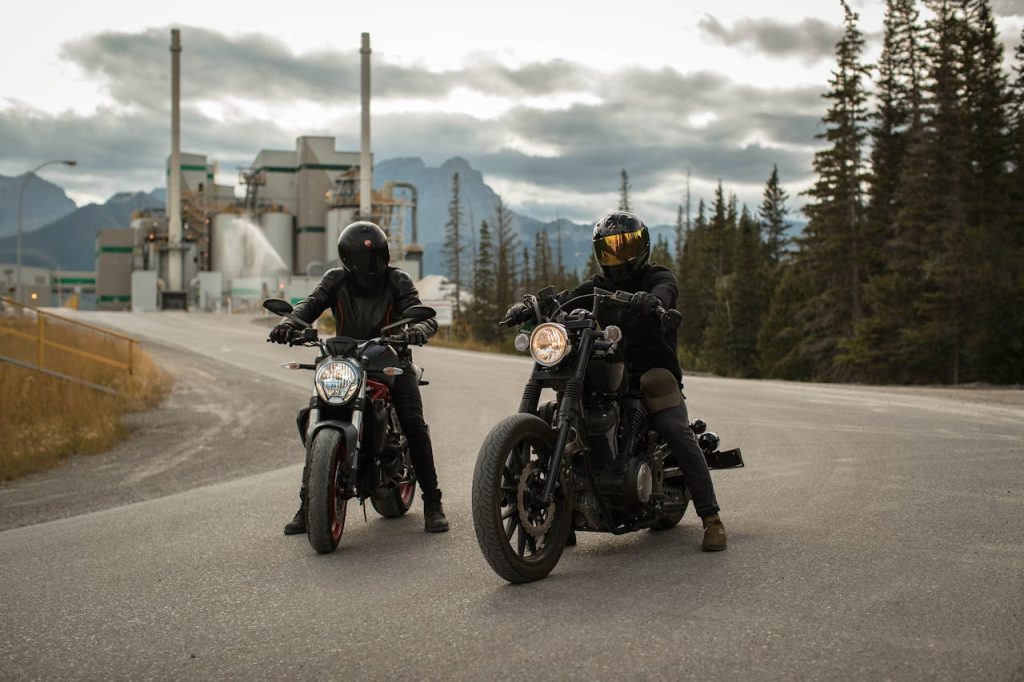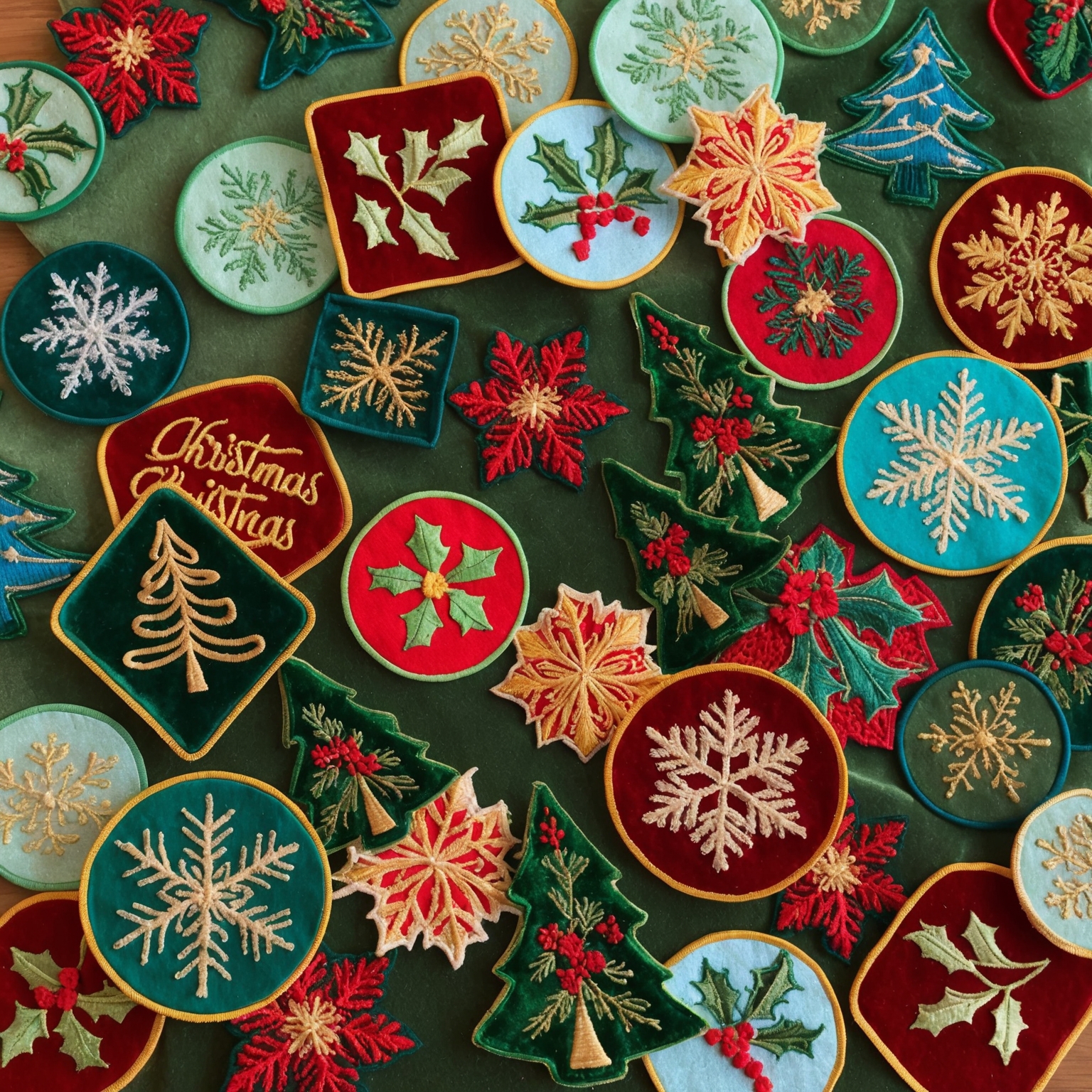The Language of Biker Patches
Biker patches are more than just decorative elements on leather jackets and vests; they are a language of their own, conveying a wealth of information about the wearer’s identity, affiliations, and values. These patches, adorned with vibrant colors and intricate symbols, hold deep meanings within motorcycle culture. This article explores the significance of colors and symbols in biker patches, decoding their messages and uncovering their cultural importance.
1. The Origins and Evolution of Biker Patches
Historical Roots
The tradition of biker patches can be traced back to the post-World War II era, when veterans returning home formed motorcycle clubs to recapture the camaraderie and adrenaline of combat. These early clubs adopted military-style patches to signify membership and create a sense of unity.
Example: The Boozefighters Motorcycle Club, founded in 1946, is one of the earliest clubs to use patches, featuring a caricature of a drunk man leaning against a lamp post, symbolizing their rebellious spirit.
Evolution Over Time
Over the decades, biker patches have evolved in design and meaning. What started as simple identifiers have transformed into complex symbols representing a club’s history, values, and hierarchy.
Example: The Hells Angels, one of the most famous motorcycle clubs, have a patch that features the iconic winged death head, signifying their bold and rebellious nature.
2. The Anatomy of a Biker Patch
The Back Patch
The back patch is the most significant component of a biker’s jacket or vest. It usually consists of three parts: the top rocker, the bottom rocker, and the centerpiece. The top rocker typically displays the club’s name, the bottom rocker indicates the region or chapter, and the centerpiece is the club’s logo or emblem.
Example: A typical Hells Angels back patch features the club’s name on the top rocker, the chapter location on the bottom rocker, and the winged death head in the center.
Side Patches and Rockers
Side patches and rockers provide additional information about the biker’s role, rank, or achievements within the club. These patches can indicate positions such as president, vice president, or road captain, and may also include patches for specific milestones or events.
Example: A Bandidos member might wear a side patch indicating their role as sergeant-at-arms, signifying their responsibility for maintaining order within the club.
Support Patches
Support patches are worn by non-members to show their allegiance to a particular club. These patches typically feature the club’s colors and symbols but are designed to distinguish supporters from full members.
Example: A supporter of the Outlaws Motorcycle Club might wear a support patch featuring the club’s skull and crossed pistons logo.
3. The Significance of Colors in Biker Patches
Primary Colors
The primary colors used in biker patches are often chosen for their visibility and impact. These colors can convey various meanings, from power and strength to loyalty and courage.
Example: Red is a dominant color in many biker patches, symbolizing strength, passion, and danger. The Hells Angels’ use of red in their patch reflects their bold and fearless nature.
Black
Black is a common color in biker patches, representing power, rebellion, and mystery. It is often used as a background color to make other elements stand out more vividly.
Example: The Outlaws Motorcycle Club uses black extensively in their patch, symbolizing their outlaw status and defiance of societal norms.
White
White is frequently used in contrast with black to create a striking visual effect. It symbolizes purity, truth, and integrity, balancing the darker elements of the patch.
Example: The Mongols Motorcycle Club uses white in their patch to highlight the club’s name and other important details, making them stand out against the black background.
Gold and Yellow
Gold and yellow are associated with wealth, honor, and excellence. These colors are often used to signify high-ranking members or special achievements within the club.
Example: A president’s patch in a motorcycle club might feature gold borders or lettering to denote their leadership status.
Green
Green is linked to growth, harmony, and renewal. In biker culture, it can also represent a connection to nature and the open road.
Example: A patch for a motorcycle club focused on environmental conservation might prominently feature green to symbolize their commitment to protecting the earth.
4. The Symbolism of Common Icons in Biker Patches
Skulls and Bones
Skulls and bones are prevalent in biker patches, symbolizing mortality, rebellion, and the acceptance of danger. These icons reflect the fearless and non-conformist attitude of bikers.
Example: The Hells Angels’ winged death head is a powerful symbol of their willingness to confront danger and defy societal expectations.
Wings
Wings symbolize freedom, transcendence, and the spirit of adventure. They are often incorporated into patches to represent the sense of liberation that comes with riding.
Example: The Hells Angels’ patch features wings to signify the freedom and exhilaration of life on the open road.
Animals
Animals such as eagles, wolves, and lions are commonly used in biker patches to represent strength, courage, and loyalty. Each animal carries its own set of symbolic meanings.
Example: The Pagan’s Motorcycle Club uses a Norse god riding a chopper as their emblem, symbolizing strength and a warrior spirit.
Weapons
Weapons like swords, knives, and guns symbolize power, protection, and readiness to defend the club’s honor. They reflect the militant and vigilant nature of biker culture.
Example: A patch featuring crossed swords might indicate a club’s readiness to protect its members and assert its dominance.
Crosses
Crosses, particularly the Iron Cross and the Maltese Cross, are symbols of honor, bravery, and sacrifice. They are often used to commemorate fallen members or signify a commitment to brotherhood.
Example: The Iron Cross used in some patches may pay homage to historical symbols of bravery and honor, connecting the club to a legacy of courage.
5. The Role of Patches in Establishing Hierarchy and Roles
Ranking Patches
Ranking patches indicate the hierarchy within a motorcycle club, distinguishing leaders and officers from regular members. These patches are worn with pride and signify the wearer’s status and responsibilities.
Example: A “President” patch indicates the leader of a chapter, responsible for making decisions and guiding the club’s direction.
Role-Specific Patches
Role-specific patches denote specific duties and responsibilities within the club. These patches can include titles like “Road Captain,” “Treasurer,” or “Sergeant-at-Arms.”
Example: A “Road Captain” patch indicates the member responsible for planning and leading rides, ensuring the safety and coordination of the group.
Achievement Patches
Achievement patches are awarded to members who have accomplished specific goals or milestones. These patches celebrate individual contributions and reinforce the values of the club.
Example: A patch commemorating participation in a major rally or long-distance ride highlights the member’s dedication and achievement.
6. The Cultural Impact of Biker Patches
Fostering Brotherhood and Loyalty
Biker patches play a crucial role in fostering a sense of brotherhood and loyalty among club members. They symbolize a shared identity and commitment to the club’s values and goals.
Example: Members of the same club wearing identical patches create a visible bond of unity and mutual respect.
Establishing a Unique Identity
Each motorcycle club has a unique identity reflected in its patches. These patches differentiate one club from another, creating a distinct brand and reputation within the biker community.
Example: The unique design of the Gypsy Joker Motorcycle Club’s patch sets them apart from other clubs, reinforcing their individuality and reputation.
Commemorating History and Tradition
Patches often commemorate the history and traditions of a motorcycle club. They serve as a reminder of the club’s origins, significant events, and the legacy of its members.
Example: A patch celebrating the 50th anniversary of a motorcycle club honors its long-standing presence and the contributions of its members over the years.
7. The Etiquette and Protocol of Wearing Biker Patches
Earning Your Patch
In many motorcycle clubs, patches must be earned through a process of initiation and proving one’s loyalty and commitment. This process fosters a sense of achievement and belonging.
Example: Prospective members might undergo a probationary period, during which they must demonstrate their dedication before receiving their full patch.
Displaying Patches Respectfully
Wearing biker patches comes with a code of respect and etiquette. Members must display their patches properly and honor the symbols and values they represent.
Example: A member should never wear a patch that they have not earned or display it in a disrespectful manner.
Understanding Patch Placement
The placement of patches on a jacket or vest carries specific meanings. Understanding the proper placement is essential for respecting the traditions and hierarchy of the club.
Example: The back patch typically occupies the central position on the back of the jacket, with ranking and role-specific patches placed on the front or sides.
8. The Future of Biker Patches
Innovations in Design and Materials
As technology advances, new materials and techniques are being incorporated into the design of biker patches. These innovations allow for more intricate designs and greater durability.
Example: Modern patches might use reflective materials or advanced embroidery techniques to create a more striking and long-lasting design.
Digital Integration
The future of biker patches may include digital elements, such as QR codes or NFC chips, that provide additional information or interactive experiences.
Example: A patch with an embedded QR code could link to a digital history of the club or a video message from the club’s president.
Sustaining Traditions
While embracing new technologies, it is essential to sustain the traditions and values that biker patches represent. Maintaining the cultural significance of these symbols will ensure their continued relevance.
Example: Clubs might combine traditional embroidery with modern elements, preserving the heritage of their patches while adapting to contemporary trends.
The Enduring Legacy of Biker Patches
Biker patches are a rich tapestry of colors and symbols that convey a wealth of information about the wearer’s identity, affiliations, and values. From their historical roots to their evolving designs, these patches play a crucial role in motorcycle culture. They foster a sense of brotherhood, commemorate history, and establish unique identities within the biker community.
By understanding the significance of colors and symbols in biker patches, we gain a deeper appreciation for the cultural impact and enduring legacy of these iconic emblems. Whether you are a biker, an enthusiast, or simply curious about this fascinating subculture, decoding the language of biker patches offers a window into the world of motorcycle clubs and the values they hold dear.
If you are interested in purchasing high-quality custom patches, feel free to call us at 866-903-4875 or fill out one of our FREE quotes here.





